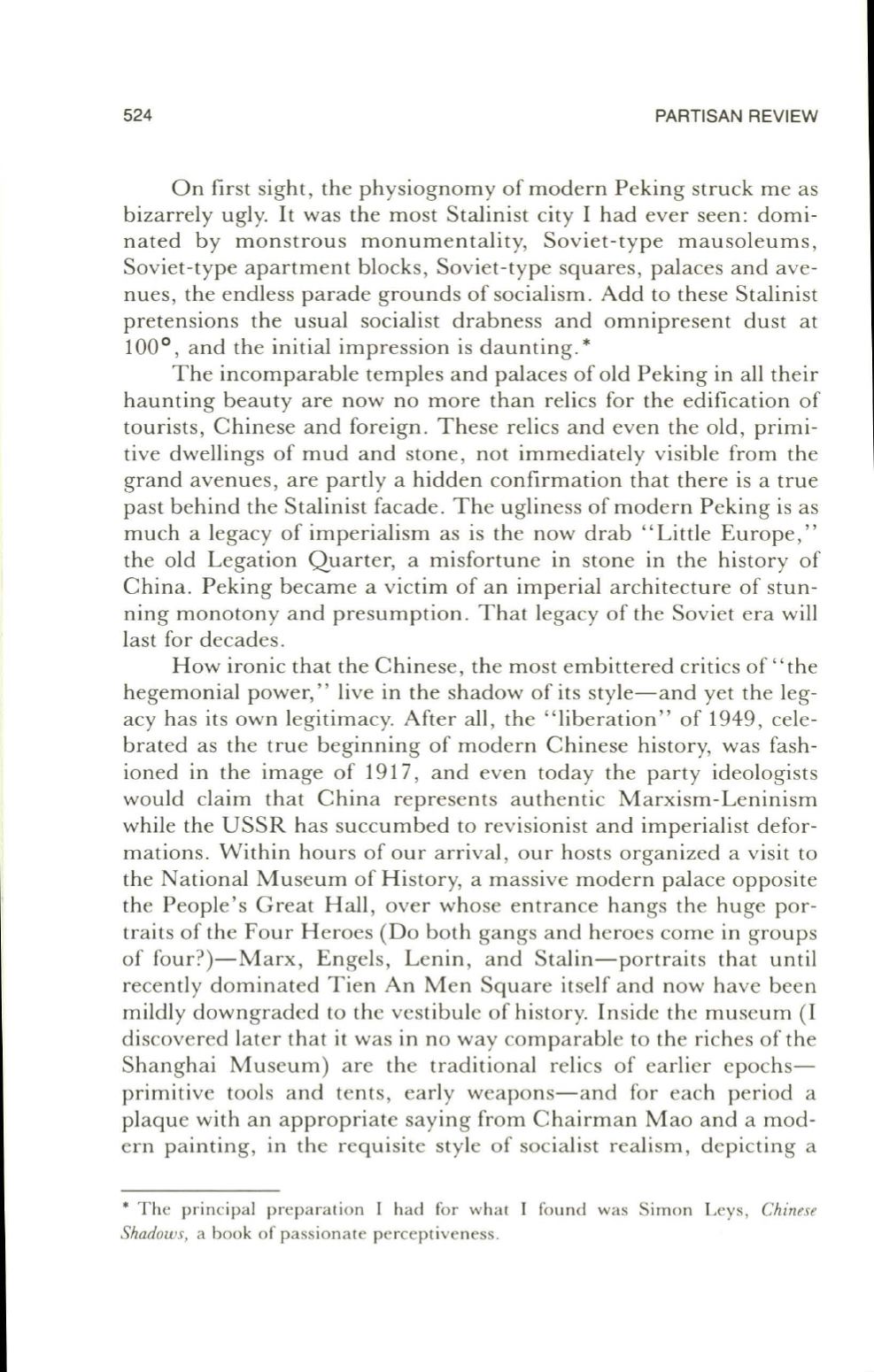
524
PARTISAN REVIEW
On first sight, the physiognomy of modern Peking struck me as
bizarrely ugly.
It
was the most Stalinist city I had ever seen: domi–
nated by monstrous monumentality, Soviet-type mausoleums,
Soviet-type apartment blocks, Soviet-type squares, palaces and ave–
nues, the endless parade grounds of socialism. Add to these Stalinist
pretensions the usual socialist drabness and omnipresent dust at
100°, and the initial impression is daunting.
*
The incomparable temples and palaces of old Peking in all their
haunting beauty are now no more than relics for the edification of
tourists, Chinese and foreign . These relics and even the old, primi–
tive dwellings of mud and stone, not immediately visible from the
grand avenues, are partly a hidden confirmation that there is a true
past behind the Stalinist facade. The ugliness of modern Peking is as
much a legacy of imperialism as is the now drab "Little Europe,"
the old Legation Quarter, a misfortune in stone in the history of
China. Peking became a victim of an imperial architecture of stun–
ning monotony and presumption. That legacy of the Soviet era will
last for decades.
How ironic that the Chinese, the most embittered critics of "the
hegemonial power," live in the shadow of its style-and yet the leg–
acy has its own legitimacy. After all , the "liberation" of 1949, cele–
brated as the true beginning of modern Chinese history, was fash–
ioned in the image of 1917, and even today the party ideologists
would claim that China represents authentic Marxism-Leninism
while the USSR has succumbed to revisionist and imperialist defor–
mations . Within hours of our arrival, our hosts organized a visit to
the National Museum of History, a massive modern palace opposite
the People's Great Hall, over whose entrance hangs the huge por–
traits of the Four Heroes (Do both gangs and heroes come in groups
of four?)-Marx, Engels, Lenin, and Stalin-portraits that until
recently dominated Tien An Men Square itself and now have been
mildly downgraded to the vestibule of history. Inside the museum (1
discovered later that it was in no way comparable to the riches of the
Shanghai Museum) are the traditional relics of earlier epochs–
primitive tools and tents, early weapons-and for each period a
plaque with an appropriate saying from Chairman Mao and a mod–
ern painting, in the requisite style of socialist realism, depicting a
• The principal preparation I had for what
r
found was Simon Leys ,
Chinese
Shadows,
a book of passion ate perceptiveness.


